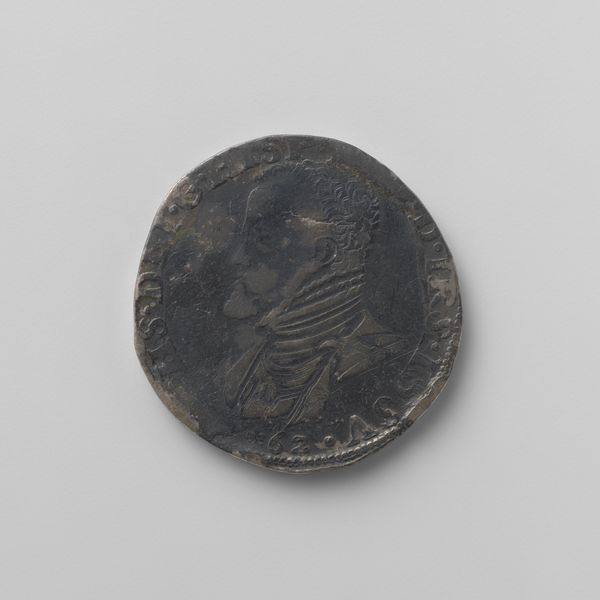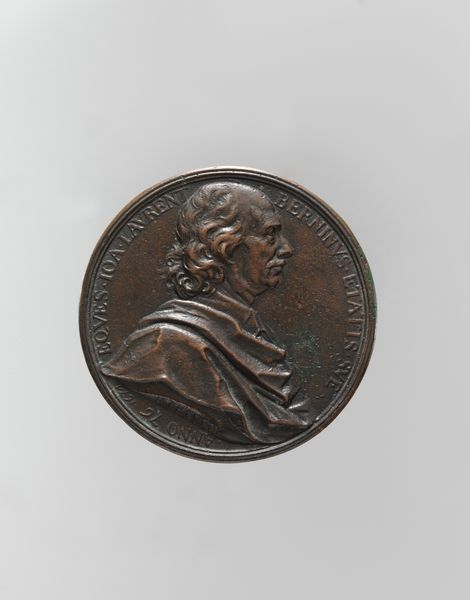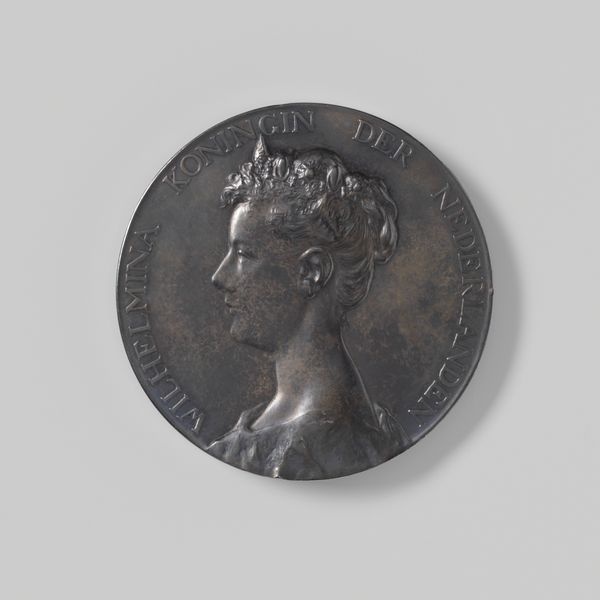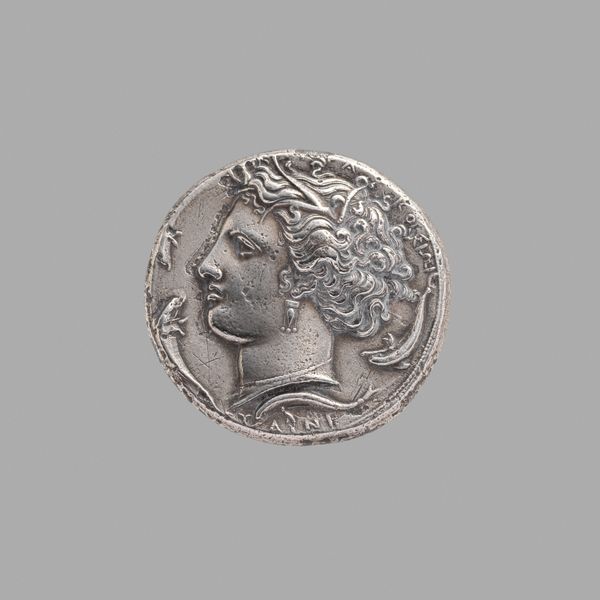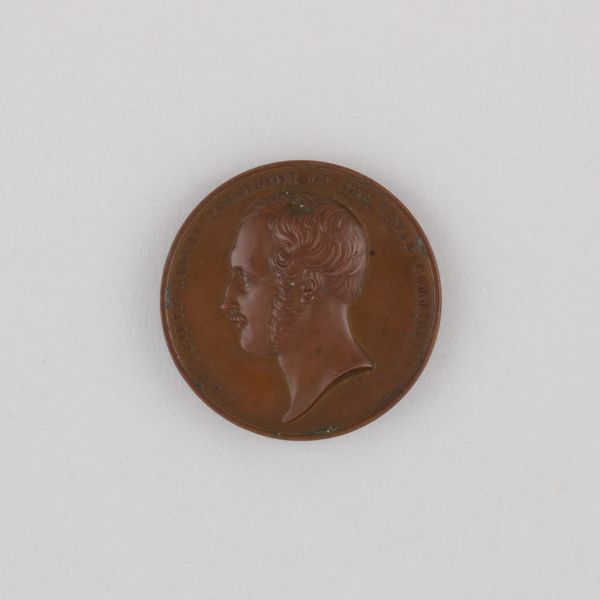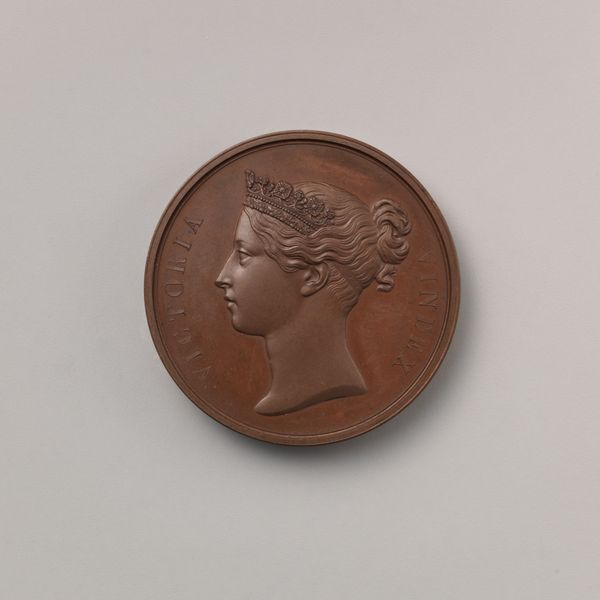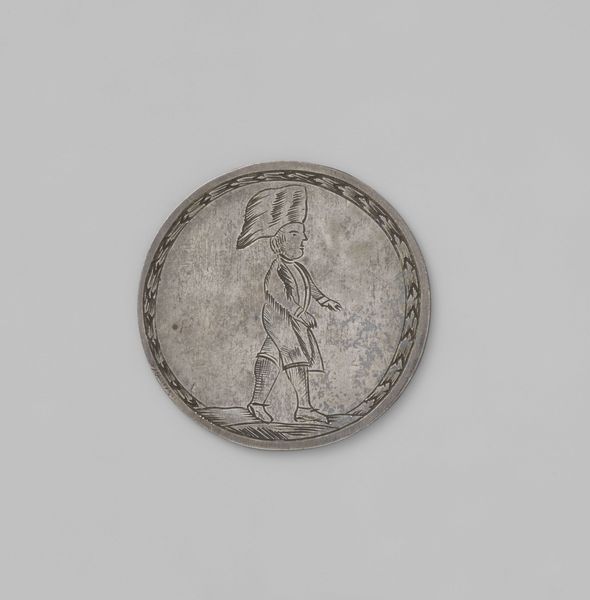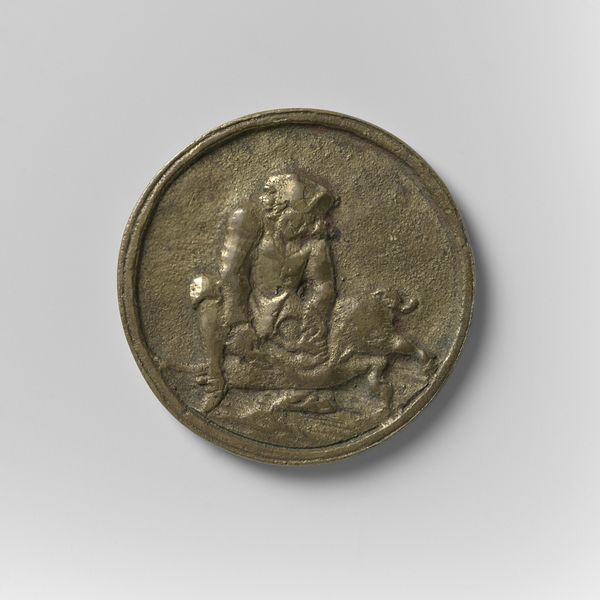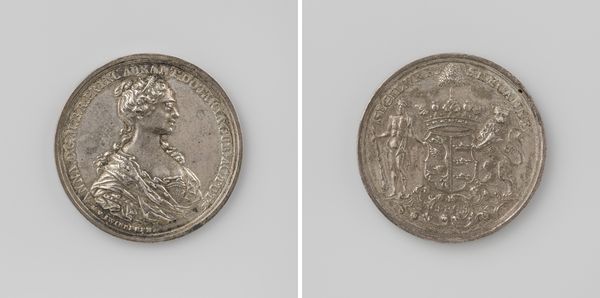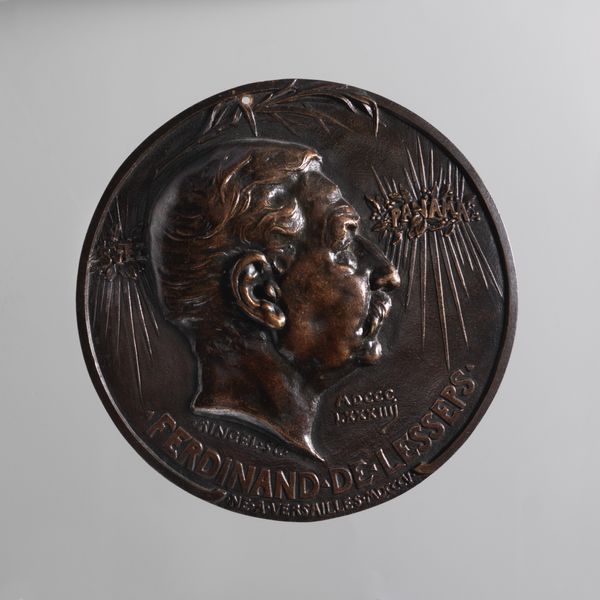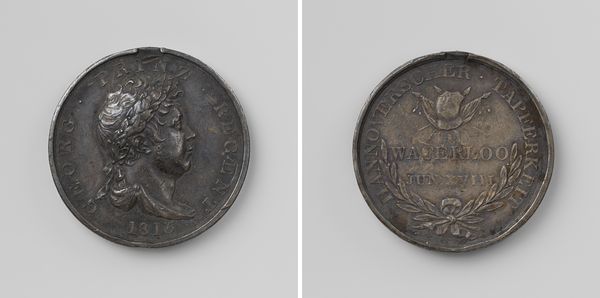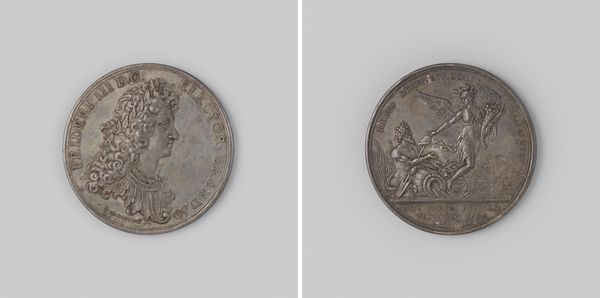
metal, sculpture
#
portrait
#
metal
#
sculpture
#
modernism
#
realism
Dimensions: diameter 7.0 cm, thickness 0.4 cm
Copyright: Rijks Museum: Open Domain
Curator: Looking at this plaquette by Johan Melchior Faddegon from 1902, what captures your eye first? Editor: Well, immediately, it’s that resolute profile and the cool, silvery surface of the metal. It feels almost… icy. Curator: Precisely. The plaquette, which is essentially a type of commemorative medal made of metal, presents a portrait of Queen Wilhelmina. The bordering script is written in Arabic; that was commissioned on the occasion of the Queen’s coronation in 1898 to mark her authority in the Dutch East Indies. Editor: Authority certainly seems to be the keyword. The crown, that unwavering gaze... but, doesn’t it feel slightly...distant? Cold, as I said? Curator: Perhaps. Wilhelmina’s image here is crafted to project a certain image of Dutch royalty, which also reflects the anxieties around the monarchy, colonialism, and international affairs at that time. Note how Faddegon's modern style subtly diverges from traditional regal portraiture, but it remains dignified. Editor: Interesting point. So, this wasn't just about a pretty picture for the monarchy; there's a socio-political strategy embedded. And what about the object itself, as a piece of metal, almost like a coin? Curator: The medium heightens the message, definitely. As a smaller, reproducible sculpture, the plaque had wide circulation, unlike many monumental portrait busts from earlier monarchies, helping build an imagined community throughout the Netherlands and its colonial sphere. Editor: Almost a proto-photograph then in its ability to spread the monarch’s likeness. Thinking of the artist's intent, what kind of feelings about the Dutch Empire were meant to come through, do you think? Was it a simple image of benevolent colonial rule, or did they recognize that there were more troubling aspects to colonialism? Curator: Oh, I doubt the royal family wanted to acknowledge the latter. Though Faddegon's subtle design choices introduce elements of doubt, highlighting both the strength and perhaps the fragility of power. It is never simple with power, right? Editor: Right you are. Now when I look at that distant gaze of Queen Wilhelmina, it makes me feel all kinds of contradictory things about what was happening in the world then and how we remember it now. It certainly takes more than a single royal image to settle such disputes. Curator: Yes. And Faddegon’s elegant metal portrait certainly speaks volumes, prompting reflection on monarchy and its impact. It's history in our hands.
Comments
No comments
Be the first to comment and join the conversation on the ultimate creative platform.
